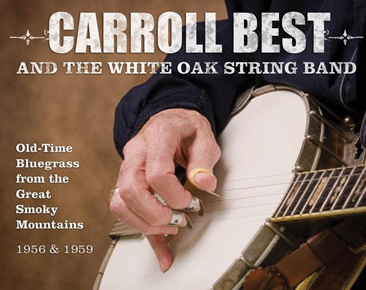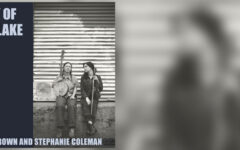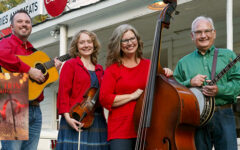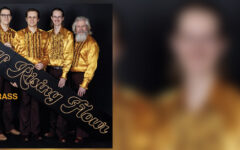
 I love discovering new music. The majority of the time, that music is just new to me: an early J.D. Crowe & the New South album I’ve never heard before, a Jimmy Martin concert from the mid-1990s streaming on YouTube, a new country artist that doesn’t sing about cut-off jeans and tailgates. East Tennessee State University professor Ted Olson also likes finding new music, although what he finds is usually in the vein of “nobody has heard this since it was recorded.” In the past, he’s helped compile historical collections of songs from the Bristol Sessions, the Johnson City Sessions, and field recordings from the Great Smoky Mountains, among others. His latest contribution comes in the form of the new album Carroll Best and the White Oak String Band: Old-Time Bluegrass from the Great Smoky Mountains, 1956 & 1959.
I love discovering new music. The majority of the time, that music is just new to me: an early J.D. Crowe & the New South album I’ve never heard before, a Jimmy Martin concert from the mid-1990s streaming on YouTube, a new country artist that doesn’t sing about cut-off jeans and tailgates. East Tennessee State University professor Ted Olson also likes finding new music, although what he finds is usually in the vein of “nobody has heard this since it was recorded.” In the past, he’s helped compile historical collections of songs from the Bristol Sessions, the Johnson City Sessions, and field recordings from the Great Smoky Mountains, among others. His latest contribution comes in the form of the new album Carroll Best and the White Oak String Band: Old-Time Bluegrass from the Great Smoky Mountains, 1956 & 1959.
The musicians here were not a regular band, but instead groups of friends assembled in two different years by folklorist Joseph Sargent Hall in the White Oak community of Haywood County, North Carolina. That’s not to say they weren’t talented. Most performed semi-professionally at some point in time, on radio stations and barn dances and in regional bands. The music comes across as tight and driving, and if the liner notes didn’t say so, it would be difficult to discern that these men didn’t play together regularly. In fact, Best is the only musician who appears in both recording sessions, though he is joined by fine guitarists and fiddlers on each.
Unlike Scruggs, Reno, Osborne, and Crowe, Best isn’t a name that immediately comes to mind when you think about the banjo. However, as this record reveals, the western North Carolina native was quite talented on the instrument, particularly when it came to what is now known as melodic style banjo (although Best referred to it as “fiddle style,” and now I just might too). The songs here are largely old fiddle tunes, although there are a few newer songs and several numbers made famous by Flatt and Scruggs. There are 37 tracks, almost all clocking in at under two minutes, and the majority will be familiar to any fan of bluegrass.
On the songs collected here, Best’s playing shows influences from both Scruggs and Don Reno, as well as a precursor to the melodic style which became popular beginning in the 1960s. In the album’s liner notes, Olson puts forth the case that Best beat pickers like Bill Keith to developing this style. Highlights of Best’s melodic playing include a slow, almost mournful More Pretty Girls Than One, a fiery Lost Indian (accompanied by some excellent fiddling from S.T. Swanger), and the toe-tapping Black-Eyed Susan.
Banjo fans will also enjoy Golden Slippers, a slight reinvention of Dear Old Dixie, the three different versions of Home Sweet Home, and a pre-Scruggs recording of Cumberland Gap. Banjo Boogie is a neat original, a mixture of Arthur Smith’s Guitar Boogie and the rapid-fire rolls of Don Reno. Another original is Smoky Mountain Melody, which is a fine example of country music of the time, including nice steel guitar from Don Brooks.
This isn’t an album that’s going to top the charts, but then again, that’s not necessarily its purpose. Olson put the album together from a collection of field recordings found in ETSU’s Archives of Appalachia and has included an extensive, well-researched, and well-written set of liner notes. The notes not only provide background information on the musicians and the recording sessions, but also tackle an in-depth description of Best’s several playing styles. The track listings are a fun bonus for banjo fanatics, comparing and contrasting Best’s playing with other versions of the song and other pickers.
Carroll Best and the White Oak String Band is a must-have for Appalachian music scholars and serious fans of banjo music, simply for its historic value. However, it also showcases great musicianship and nicely played versions of several dozen familiar tunes, which would make it a good addition to any bluegrass listener’s collection.
For more information on the project, visit the Great Smoky Mountains Association (the album’s producers) at www.smokiesinformation.org. The album can be purchased from their online store, or from several other online retailers.







